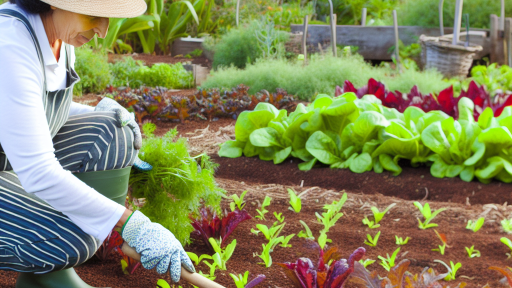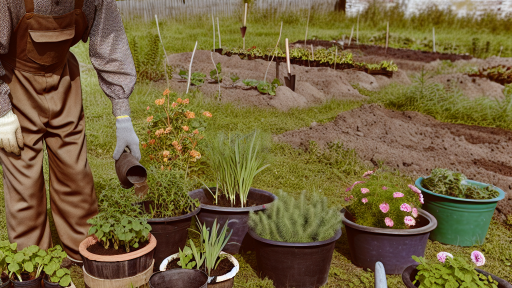Understanding the Market Demand for Mushrooms
Current Trends in Mushroom Consumption
The popularity of mushrooms continues to grow among consumers.
Many people now recognize their health benefits.
Additionally, they enjoy the distinctive flavors mushrooms offer.
Shifting dietary preferences lead to increased demand for plant-based foods.
Mushrooms fit into this trend as a versatile ingredient.
Identifying Target Markets
Understanding your target market is essential for success.
Restaurants often seek fresh, high-quality mushrooms.
Consumers also buy mushrooms at grocery stores and farmers’ markets.
Health-conscious individuals are another key demographic.
Consider reaching out to food manufacturers as well.
Market Research Techniques
Conduct surveys to gather information about consumer preferences.
Analyze sales data to identify popular mushroom varieties.
Utilize social media for insights into consumer trends.
Networking with local chefs can provide valuable feedback.
Attend industry conferences to learn about market dynamics.
Transform Your Agribusiness
Unlock your farm's potential with expert advice tailored to your needs. Get actionable steps that drive real results.
Get StartedAdapting to Market Changes
The mushroom market can be volatile and unpredictable.
Stay informed about new culinary trends and consumer preferences.
Flexibility in your product offerings can boost sales.
Consider introducing specialty mushrooms like lion’s mane or oyster varieties.
Being proactive will give you a competitive edge.
Assessing Your Current Production Capacity
Evaluating Existing Infrastructure
Start by analyzing your current farming facilities.
Evaluate your growing space for efficiency.
Examine equipment and tools for productivity.
Identify any bottlenecks in your operations.
Understanding Yield Performance
Monitor your mushroom yields regularly.
Keep detailed records of harvest sizes.
Compare production results with industry standards.
Adjust growing practices based on yield data.
Identifying Labor Needs
Assess your current workforce capabilities.
Determine if you have sufficient skilled labor.
Evaluate training programs for new employees.
Consider hiring seasonal workers during peak times.
Reviewing Financial Resources
Analyze your current budget and expenses.
Identify areas where you can reduce costs.
Explore financing options for expansion.
Ensure you have a financial cushion for unexpected events.
Gathering Market Insights
Research local market demands for mushrooms.
Identify customer preferences and trends.
Engage with local distributors and retailers.
Showcase Your Farming Business
Publish your professional farming services profile on our blog for a one-time fee of $200 and reach a dedicated audience of farmers and agribusiness owners.
Publish Your ProfileAdjust your production based on market feedback.
Choosing the Right Mushroom Varieties for Scaling
Understanding Market Demand
Start by researching current market trends.
Identify which mushroom varieties are in high demand.
Consider local preferences and culinary practices.
Analyze sales data from local markets and restaurants.
Adapt your production to meet these demands.
Evaluating Growth Conditions
Each mushroom variety has unique growth requirements.
Some varieties thrive in high humidity, while others prefer drier conditions.
Assess your current growing environment carefully.
Ensure that you can provide optimal conditions for chosen varieties.
Consider factors like temperature, light, and substrate availability.
Exploring High-Yield Varieties
High-yield mushroom varieties can maximize profits.
Consider options like Oyster, Shiitake, and Lion’s Mane mushrooms.
These varieties often have shorter growth cycles and higher demand.
Research which varieties are best suited for your system.
Investing in reliable strains can enhance your yield significantly.
Assessing Initial Investment and Revenue Potential
Different varieties have varying costs and returns.
Conduct a cost-benefit analysis before selecting varieties.
Estimate the initial investment for each mushroom type.
Evaluate projected revenue based on market pricing.
Make informed decisions based on your financial capacity.
Scaling Up Production
As you scale, consider diversifying your mushroom varieties.
Diverse products can help stabilize income throughout the year.
Introduce new varieties gradually to manage risk.
Monitor and adapt your production methods for each type.
Stay flexible to market changes and evolving consumer preferences.
Uncover the Details: Starting Your Own Organic Small-Scale Farm
Implementing Efficient Growing Techniques and Technologies
Utilizing Controlled Environment Agriculture
Controlled environment agriculture offers precise control over growing conditions.
This helps optimize temperature, humidity, and light levels.
Consequently, plants can grow faster and healthier than in traditional settings.
Consider using hydroponic systems for improved nutrient delivery.
Additionally, vertical farming maximizes space usage in urban areas.
Adopting Automated Systems
Automation can significantly enhance productivity in mushroom farming.
Use sensors to monitor environmental variables constantly.
Automated watering systems ensure consistent moisture levels for the mushrooms.
Moreover, scheduling lighting can help simulate seasonal changes.
Incorporating these technologies can reduce labor costs and improve yield.
Implementing Sustainable Practices
Sustainability plays a vital role in scaling your mushroom farm.
Recycling agricultural waste into substrates helps minimize costs.
This practice reduces waste and contributes to a circular economy.
Showcase Your Farming Business
Publish your professional farming services profile on our blog for a one-time fee of $200 and reach a dedicated audience of farmers and agribusiness owners.
Publish Your ProfileAdditionally, consider using organic farming techniques.
These techniques improve soil health and mushroom quality over time.
Continuous Learning and Adaptation
Stay updated on industry trends and new technologies.
Join local agricultural cooperatives or online forums for knowledge sharing.
Networking with experts can inspire innovative solutions for challenges.
Additionally, seek feedback from customers to improve your products.
Adapting to feedback can lead to greater customer satisfaction.
Uncover the Details: Edible Landscaping Layouts for Small Farms
Optimizing Space Usage
Vertical Farming
Vertical farming maximizes the use of limited space.
This method utilizes vertically stacked layers for cultivation.
It allows for a significant increase in mushroom yield per square foot.
Additionally, vertical farming can enhance temperature control.
Adjustments to humidity and air circulation become easier as a result.
Moreover, it can lead to lower energy consumption in the long run.
Consider investing in specialized vertical farming systems.
These systems often incorporate automation for efficiency.
Horizontal Farming
Horizontal farming offers its own advantages for mushroom cultivation.
This method typically requires a larger floor area.
It is easier to manage and harvest mushrooms in a linear layout.
Furthermore, horizontal setups can be less costly to establish initially.
Farmers may use simpler structures, reducing start-up expenses.
However, this method might limit the total yield compared to vertical setups.
Evaluate your available space to determine the best approach.
Combining Techniques
Many farmers find success in combining both vertical and horizontal farming.
This hybrid model takes advantage of each method’s strengths.
By diversifying your space usage, you can optimize yields.
Furthermore, this approach allows flexibility in crop management.
Balance space allocation based on your specific needs and resources.
Experiment with layouts to determine what works best for your farm.
See Related Content: Organic Techniques for Hydroponic Gardens
Developing a Comprehensive Business Plan for Growth
Defining Your Vision and Mission
Your vision shapes the future of your mushroom farm.
It helps you clarify your goals and aspirations.
Meanwhile, your mission defines your purpose and values.
Craft a compelling statement that resonates with your team.
Conducting Market Research
Market research provides crucial insights into consumer preferences.
Understand your target audience and their purchasing behaviors.
Identify current trends in the mushroom industry.
This research should inform your product offerings and marketing strategies.
Setting Financial Goals
Establish realistic financial goals for your mushroom farm.
Include projections for revenue and expenses over the coming years.
Showcase Your Farming Business
Publish your professional farming services profile on our blog for a one-time fee of $200 and reach a dedicated audience of farmers and agribusiness owners.
Publish Your ProfileCarefully consider start-up costs and ongoing operational expenses.
Use these figures to guide your growth strategy.
Developing a Marketing Strategy
Your marketing strategy should promote your unique value proposition.
Identify effective channels to reach your target customers.
Consider utilizing social media, local markets, and partnerships.
Engage customers through storytelling around your brand.
Building a Sustainable Operational Plan
An operational plan outlines your daily activities and processes.
Determine the necessary resources for production and distribution.
Focus on sustainability to reduce costs and environmental impact.
Implement best practices for mushroom cultivation and harvesting.
Establishing a Strong Team
A motivated team drives the success of your farm.
Hire individuals who share your vision and values.
Invest in training and development for your staff.
Encourage collaboration to foster a positive work environment.
Monitoring Progress and Adapting
Regularly review your business plan and performance indicators.
Analyze your successes and areas for improvement.
Be willing to adapt your strategies based on market changes.
Continuous improvement is key to sustained growth.
Learn More: Composting Techniques For City Farms

Investing in Quality Equipment and Facilities for Expansion
Understanding the Importance of Quality Equipment
Quality equipment is essential for any mushroom farm looking to scale.
Investing in reliable tools minimizes breakdowns and production delays.
Additionally, efficient equipment can reduce labor costs over time.
Farmers should focus on tools designed specifically for mushroom cultivation.
For instance, high-quality sterilization equipment enhances biosecurity.
Choosing the Right Facilities for Growth
Facilities need to support a larger operation as the farm expands.
Temperature and humidity control are key factors in mushroom growth.
Consider investing in climate-controlled growing rooms.
These rooms provide a stable environment for optimal yield.
Moreover, adequate space for storage and packing is crucial.
Modernizing Existing Infrastructure
Upgrading current facilities can boost efficiency significantly.
Consider automating certain processes to save time and labor.
For example, automatic watering systems ensure consistent moisture levels.
Moreover, improved lighting systems can enhance growth rates.
Careful modernization can make an old facility more productive.
Evaluating Suppliers and Services
Choosing the right suppliers is vital for equipment and materials.
Look for reputable companies that specialize in agricultural equipment.
Supplier reliability ensures consistent product quality and service.
Furthermore, compare pricing to make informed investment decisions.
Develop long-term relationships with trusted suppliers for future needs.
Training Your Team on New Equipment
Proper training ensures your team maximizes the benefits of new equipment.
Showcase Your Farming Business
Publish your professional farming services profile on our blog for a one-time fee of $200 and reach a dedicated audience of farmers and agribusiness owners.
Publish Your ProfileInvest in regular training sessions as you expand your facilities.
Make sure staff understands how to use tools efficiently and safely.
Encourage feedback to improve processes continually.
A skilled team will enhance productivity and increase profits.
Building Strategic Partnerships with Distributors and Retailers
Identifying Potential Partners
Start by researching local distributors and retailers in your area.
Look for businesses that specialize in organic or gourmet products.
Attend trade shows and agricultural fairs to meet potential partners.
Consider online platforms that connect producers with distributors.
Establishing Initial Communication
Reach out via email or phone to introduce yourself and your farm.
Clearly convey your unique selling propositions.
Be open to discussing potential collaboration opportunities.
Creating Compelling Proposals
Prepare tailored proposals that highlight mutual benefits.
Include data on your production capacity and quality standards.
Offer incentives, such as volume discounts or promotional events.
Nurturing Relationships
Once a partnership is established, maintain regular communication.
Schedule check-ins to discuss sales performance and feedback.
Consider hosting farm tours to deepen connections.
Leveraging Marketing Opportunities
Provide distributors with marketing materials featuring your products.
Collaborate on promotional campaigns, such as seasonal discounts.
Feature partner logos on your website and social media channels.
Expanding Your Network
Once you establish a solid foundation, seek out new partners.
Attend industry events to network and scout for new prospects.
Encourage your current partners to refer you to others in the industry.
Monitoring and Evaluating Partnerships
Regularly assess the performance of your partnerships.
Request feedback from distributors and retailers on your products.
Adjust your strategies based on their insights and market trends.
Marketing Strategies to Promote Your Mushroom Products
Utilizing Social Media
Social media platforms are powerful tools for marketing mushroom products.
Start by creating engaging content that highlights your mushrooms’ unique qualities.
Post visually appealing images to attract potential customers.
Engage with your audience by responding to comments and questions.
Consider running promotional campaigns to offer discounts or special deals.
Building a Website
A dedicated website enhances your visibility in the market.
Ensure it showcases your products attractively and informatively.
Include an online store for easy purchasing.
Incorporate a blog to share recipes and cultivation tips.
Optimize your site for search engines to drive organic traffic.
Networking with Local Chefs
Forming relationships with local chefs can expand your market reach.
Offer samples of your mushrooms to restaurants in your area.
Highlight how using fresh mushrooms enhances their dishes.
Collaborate on special menu items featuring your products.
Showcase Your Farming Business
Publish your professional farming services profile on our blog for a one-time fee of $200 and reach a dedicated audience of farmers and agribusiness owners.
Publish Your ProfileParticipate in local culinary events to increase visibility.
Participating in Farmers’ Markets
Farmers’ markets provide direct access to customers.
Set up an attractive stall to draw in shoppers.
Offer free samples to encourage purchases on the spot.
Engage with customers to build rapport and brand loyalty.
Utilize these platforms to gather feedback about your products.
Implementing Email Marketing
Email marketing remains a cost-effective strategy for reaching customers.
Build a mailing list by offering incentives for sign-ups.
Share updates, discounts, and helpful content via newsletters.
Personalize your emails for better engagement.
Use compelling subject lines to ensure high open rates.
Monitoring and Adapting to Industry Trends and Consumer Preferences
Staying Informed about Market Dynamics
Regularly analyze market trends to stay competitive.
Utilize industry reports to gather insight on growth areas.
Attend trade shows to connect with suppliers and customers.
Network with other growers to share information and strategies.
Tracking Consumer Preferences
Conduct surveys to understand what customers want.
Use social media to interact and gauge consumer opinions.
Monitor sales data to identify popular products.
Adapt your offerings based on feedback and demand.
Implementing New Technologies
Research the latest technology in mushroom farming.
Consider automation to increase efficiency and reduce labor costs.
Use data analytics to track production and sales trends.
Invest in software for inventory management and planning.
Adjusting Business Strategies
Regularly review your business plan in response to new information.
Set measurable goals to assess your growth over time.
Be flexible and ready to pivot when market conditions change.
Collaborate with local chefs to create unique products.
Additional Resources
It’s time to harvest garlic! – Organic Farming Magazine For Vegetable …




